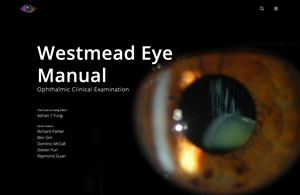13 Rhegmatogenous Retinal Detachment Special Scenarios
13.1 Rhegmatogenous Retinal Detachment: Re-detachment Surgery
13.2 Macular Hole Retinal Detachment
13.3 Retinoschisis Retinal Detachment
13.4 Optic Disc Pit Retinal Detachment and Maculopathy
13.5 Giant Retinal Tear Detachment
13.6 Retinal Dialysis
13.7 Macular Folds
13.8 Sickle Cell Detachment
13.9 Viral Retinitis Associated Retinal Detachment
13.10 Paediatric Retinal Detachment
13.11 Coloboma Associated Retinal Detachment
13.12 Inherited Retinal Dystrophies and Retinal Detachment
13.12 Inherited Retinal Dystrophies and Retinal Detachment
Retinal detachment (RD) in patients with inherited retinal dystrophies (IRD) is a scenario that most retinal specialists may encounter only rarely in their routine clinical practice. This is partly due to the rarity of IRDs and general avoidance of retinal surgery in these patients outside of clinical trials. Thus, the experience with retinal detachment repair in IRD patients is limited and there is paucity of publications covering the subject. Having treated patients with various IRDs with subretinal gene therapy and retinal prostheses, we have managed several cases of rhegmatogenous RD in such patients. The unique challenges one may encounter in these patients are described below.
Posterior Hyaloid May Be Extremely Adherent and Retina Very Thin in Patients with IRDs
The general principles of retinal detachment repair apply to the IRD cases, however relieving traction around the breaks and lifting the hyaloid may be extremely challenging in these eyes because it is frequently very adherent to the retina especially in the periphery.[1] Moreover, the retina may be very thin and peeling hyaloid from such thin retina increases the risk of iatrogenic breaks. It may be very difficult to identify retinal breaks in atrophic retina even with scleral depression, especially because they may be located posteriorly, near the vascular arcades.[2] Meticulous examination and extensive imaging with optical coherence tomography may be necessary to search for a break in the macula, near the arcades, or in the periphery.[2]
Gregori NZ, Davis JL. Surgical Observations from the First 120 Cases of Subretinal Gene Therapy for Inherited Retinal Degenerations. Retina. 2020 Dec 18. doi: 10.1097/IAE.0000000000003085. Epub ahead of print. PMID: 33394965.
Wang JC, Qian CX, Comander JI. Repair of Rhegmatogenous Retinal Detachment in Choroideremia Secondary to Posterior Extramacular Retinal Hole. Ophthalmic Surg Lasers Imaging Retina. 2022 Apr;53(4):182-184. doi: 10.3928/23258160-20220311-02. Epub 2022 Apr 1. PMID: 35417295.
Gregori NZ, Davis JL. Surgical Observations from the First 120 Cases of Subretinal Gene Therapy for Inherited Retinal Degenerations. Retina. 2020 Dec 18. doi: 10.1097/IAE.0000000000003085. Epub ahead of print. PMID: 33394965.
Wang JC, Qian CX, Comander JI. Repair of Rhegmatogenous Retinal Detachment in Choroideremia Secondary to Posterior Extramacular Retinal Hole. Ophthalmic Surg Lasers Imaging Retina. 2022 Apr;53(4):182-184. doi: 10.3928/23258160-20220311-02. Epub 2022 Apr 1. PMID: 35417295.
Gregori NZ, Davis JL. Surgical Observations from the First 120 Cases of Subretinal Gene Therapy for Inherited Retinal Degenerations. Retina. 2020 Dec 18. doi: 10.1097/IAE.0000000000003085. Epub ahead of print. PMID: 33394965.
Wang JC, Qian CX, Comander JI. Repair of Rhegmatogenous Retinal Detachment in Choroideremia Secondary to Posterior Extramacular Retinal Hole. Ophthalmic Surg Lasers Imaging Retina. 2022 Apr;53(4):182-184. doi: 10.3928/23258160-20220311-02. Epub 2022 Apr 1. PMID: 35417295.
Warren A, Wang DW, Lim JI. Rhegmatogenous retinal detachment surgery: A review. Clin Exp Ophthalmol. 2023 Apr;51(3):271-279. doi: 10.1111/ceo.14205. Epub 2023 Jan 25. PMID: 36640144.
If no proliferative vitreoretinopathy is present and the breaks are peripheral, it may be wise to proceed with a straight scleral buckle. If PVR or posterior breaks are present, a vitrectomy would be reasonable. It is important to identify and mark all retinal breaks with diathermy and then stain the vitreous with dilute triamcinolone acetonide to improve visualization and ensure careful removal of vitreous attachment to all retinal breaks.[3] Perfluorocarbon may be helpful to stabilize the retina posteriorly while working with mobile peripheral retina and to assess for egress of fluid signifying a peripheral break.[2] In many patients with peripheral retinal atrophy, even the elderly, the hyaloid is extremely adherent anterior to the equator.[1,2] Lifting the hyaloid from the macula may also be a challenge.[1-3] Posterior hyaloid may be aspirated and lifted with a soft tip cannula or the vitrector or brushed gently with a membrane scraper to create a small break in the hyaloid and start peeling it much like a true membrane.1 Unfortunately, it is not always possible to lift and remove hyaloid fully and that undermines the success rate of reattachment in these cases (Video 13.12.1). A scleral buckle alone or combined buckle-vitrectomy may be the best procedures for these challenging cases. A scleral buckle would relieve the anterior traction and is strongly encouraged to support any peripheral breaks. The sclera may be very thin in these eyes especially in cases of high myopia; thus, suturing the buckle rather than creating scleral belt loops may be a better strategy.
All rights reserved. No part of this publication which includes all images and diagrams may be reproduced, distributed, or transmitted in any form or by any means, including photocopying, recording, or other electronic or mechanical methods, without the prior written permission of the authors, except in the case of brief quotations embodied in critical reviews and certain other noncommercial uses permitted by copyright law.
Westmead Eye Manual
This invaluable open-source textbook for eye care professionals summarises the steps ophthalmologists need to perform when examining a patient.

